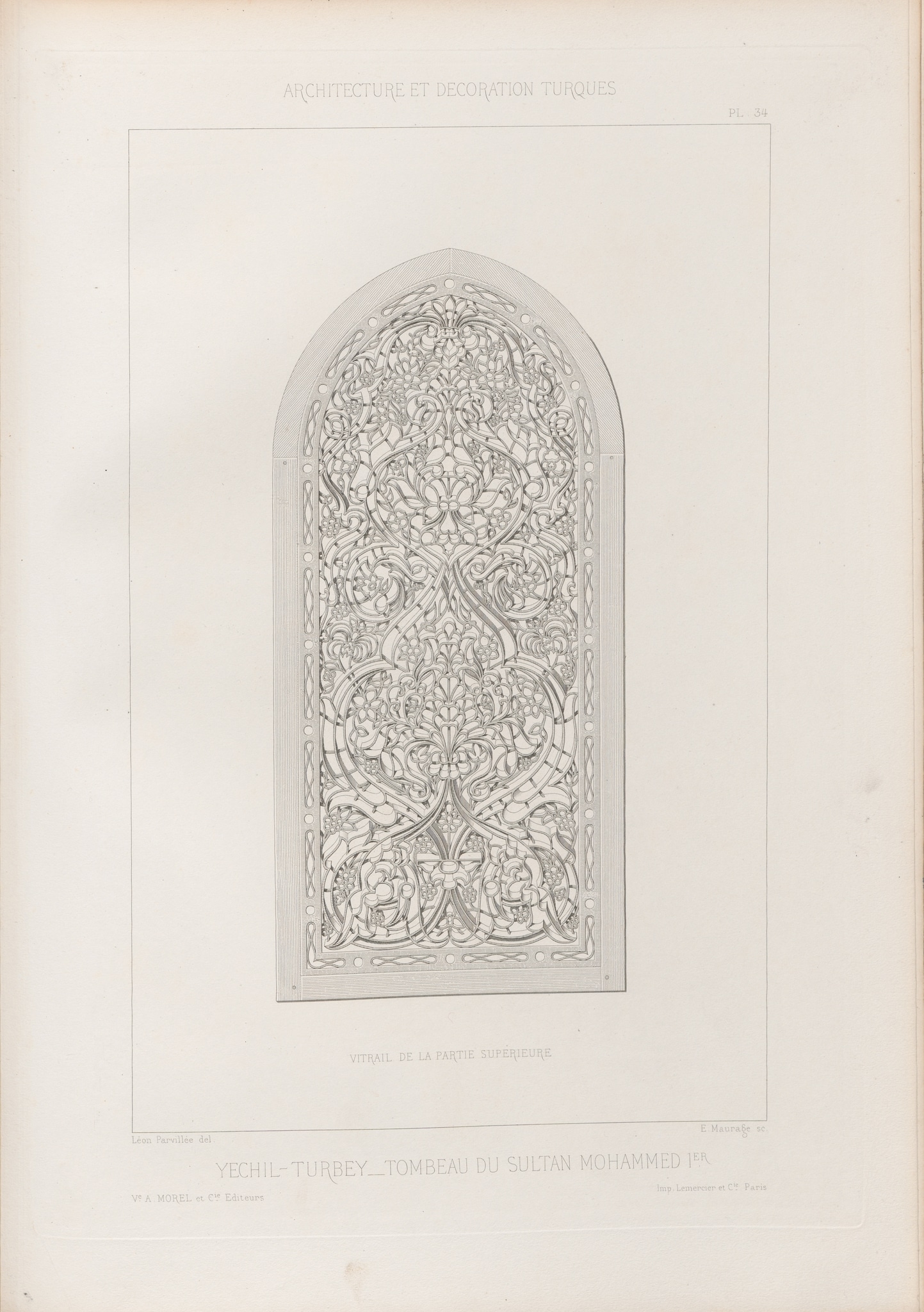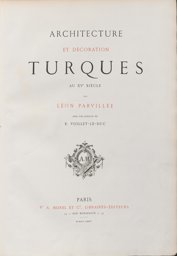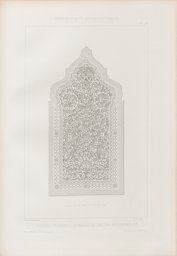Fig. 34 in Léon Parvillée, Architecture et décoration turque au XVe siècle, Paris: A. Morel et Cie, 1874. A black and white print showing a pointed-arch stucco and glass window, depicting the stucco grille, not the pieces of glass. The stucco lattice is drawn in great detail, showing the oblique carving and the different levels of the surface. Certain tendrils, palmettes, and split palmettes have a broader stucco profile, while the leaves and flowers within these tendrils are formed by a thinner one. In addition, thinner stucco pieces within the tendril outlines create a discreet division into small sections. They were not placed there for aesthetic reasons. In fact, they made it possible to fix on the back pieces of glass so small that they did not need to be cut in the curved shape of the tendril. The effect of a lower and a higher level produces a distinction between the background and the main ornament. The latter is formed by two symmetrical tendrils originating from an abstract shape in the lower part of the window. From there, two symmetrical scrolls with split palmettes grow downwards to form a curve at the bottom and then grow upwards; when they reach the central axis, they form a cluster of palmettes. From the same abstract shape, two symmetrical scrolls with large half-palmettes grow upwards. They are shaped in curves that meet on the central axis, only to deviate and come together again after smaller curves. They terminate in palmettes, which in turn form the origin of two symmetrical tendrils falling downwards on each outer side.
The central section is surrounded by a band with repeated simple perforations in the stucco, which interestingly are not carved at an angle. The window is held in a frame with slightly wavy parallel lines indicating that it was made of wood.
48A98312 · Ornamente in Form von Ranken
48AA983112 · Palmette (Ornament) - AA - stilisiert


